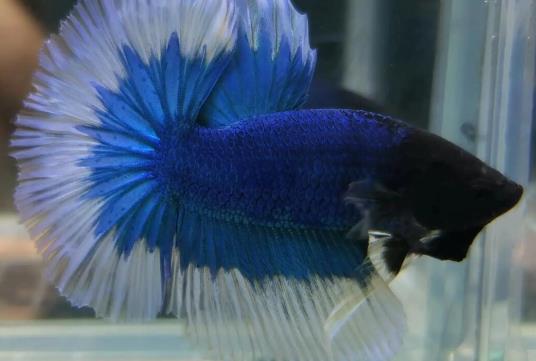Successfully breeding betta fish requires careful consideration of environmental preparation, pairing selection, and breeding techniques. Here’s a detailed guide with steps and precautions:

I. Pre-Breeding Preparation
Environmental Setup
Breeding Tank: Choose a covered tank of at least 40 liters (to prevent jumping), with water depth 10-15 cm and temperature maintained at 26-28°C.
Water Quality: Slightly acidic (pH 6.5-7.0). Add almond leaves or "lazy liquid" (conditioning agents) to encourage spawning readiness.
Shelter: Cover the tank sides with black cloth to reduce external disturbances. Place duckweed or foam nets on the water surface to help anchor the bubble nest.
Selecting Breeding Fish
Male Fish: Must have built a bubble nest (at least palm-sized in diameter) and be in active condition.
Female Fish: Should show orange-red egg clusters through the abdomen (carrying eggs), with a forward-leaning posture when resting. If not carrying eggs, feed high-protein foods like brine shrimp to induce egg development.
II. Pairing Process
Introduction Phase
Introduce the male to the breeding tank 3 days in advance to let him build a nest.
Keep the female in a transparent isolation cup inside the male’s tank for 1-2 days, observing their interaction. A strong pairing is signaled if the male swims around the cup and the female frequently looks upward.
Tank Integration
Remove the isolation cup and monitor their behavior:
Signs of Success: The female actively approaches the bubble nest, her body stripes fade, and she allows the male to nudge her back.
Signs of Failure: The female attacks the male or destroys the bubble nest—immediately separate them.
III. Mating and Post-Mating Care
Mating Process
The male wraps around the female, squeezing her abdomen to release eggs. This repeats until the female expels all eggs. The male collects fertilized eggs in his mouth and places them in the bubble nest; the female may assist in gathering stray eggs.
Separating the Parents
Remove the female immediately after mating (to prevent aggression from the male).
Leave the male alone to guard the eggs. Feed him sparingly during this period to avoid water contamination.
IV. Troubleshooting Common Issues
Uncooperative Female: Check if she’s not carrying eggs or if the environment is unsuitable. Try replacing the male or adjusting water temperature/quality.
Interrupted Mating: If no eggs are laid within 42 hours or fighting persists, terminate the pairing.
Following these steps increases the success rate of betta breeding. After breeding, closely monitor water quality to ensure the eggs hatch smoothly.
